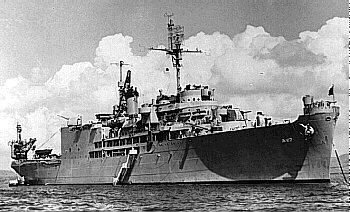






|

|

|

|

|
 | ||||

|
Western Group Capt. John E. Clark, USN  
Two different types of return address rubber stamps have been found and appear confusing until it is explained that the USS Currituck began Operation Highjump from the western coast of the United States (figure 8 with San Francisco, California wording) and returned to a port on the eastern coast (figure 9 with New York, New York wording). The reason for this being that the ship was to be de-activated at that time. Although of questionable origin, the four-line "ADMIRAL BYRDS / POLAR EXPEDITION / USS CURRITUCK AV-7 / 1946-47" handstamp has been found on both cards and covers to different addresses which would indicate that it may have been used on board the ship by crewmembers (figure 10). The large TASK GROUP 68.2 cachet has been found on the front and reverse of a number of covers sent by various crewmembers and, in fact, appears as the letterhead on one known typed letter (figure 11). This cachet appears to have been inspired by the 'label' applied to another cover originating on the Currituck (figure 12). Not to be outdone, another crewmember apparently decided to hand draw his own interpretation of the penguin in figures 11 and 12, in rough, reverse-image style (figure 13). This writer has left a recent discovery (July 1993), made by ASPP'ers Mark Smith and Murray Fishler, until last for several reasons. Not the least of these reasons is the fact that this latest variety of the fancy cancel (shown as figures 1, 2 and 3) appears on a cover cacheted and cancelled in 1943 when the USS Currituck was launched (figure 14). The second reason would be that the writer does not have any explanation for the appearance of another 'piece' of iceberg in the design. How did it get there? This cancel was applied quite cleanly to both the front and reverse of the cover and the iceberg extension is very evident. Figures 15 and 16 will give the reader a comparison of the two different iceberg designs. Is there a chance that more than one of these stamps were made up? Perhaps the readers of this essay will be good enough to examine their albums and report what they find. Presently, this is the only usage known to the writer.
[Next] USS Cacapon [Contents] Antarctic Philatelic Website Contents [Home Page] Antarctic Philately |